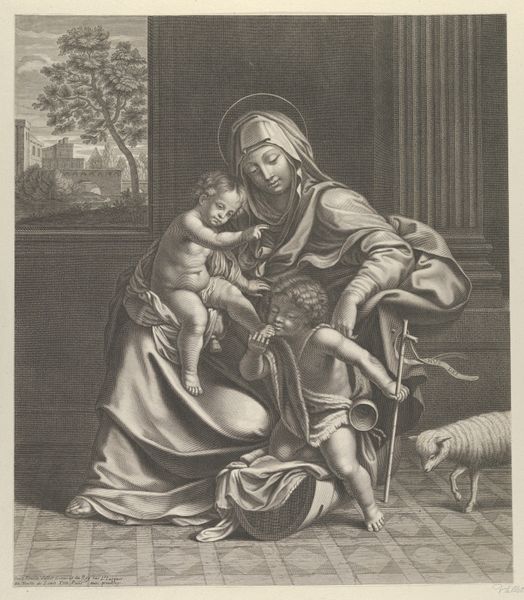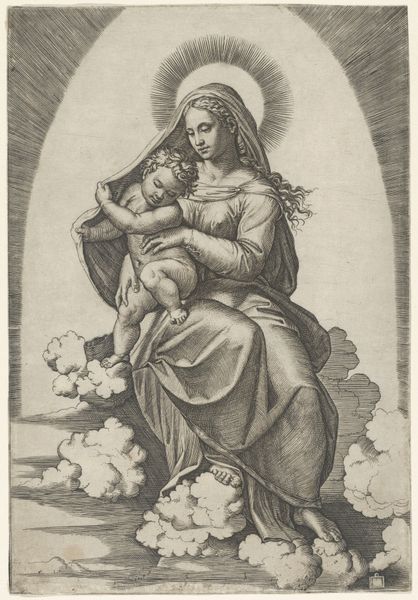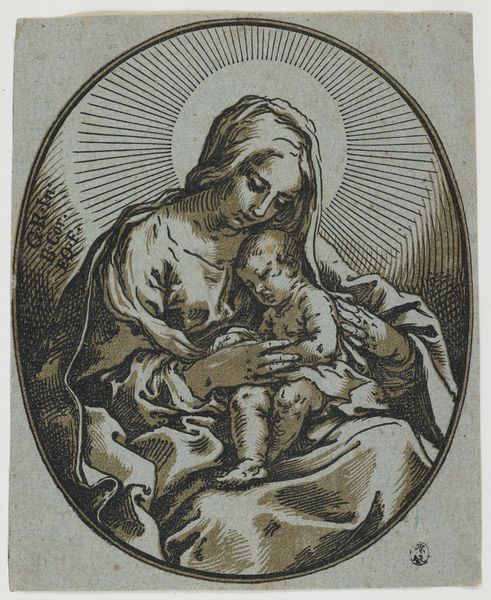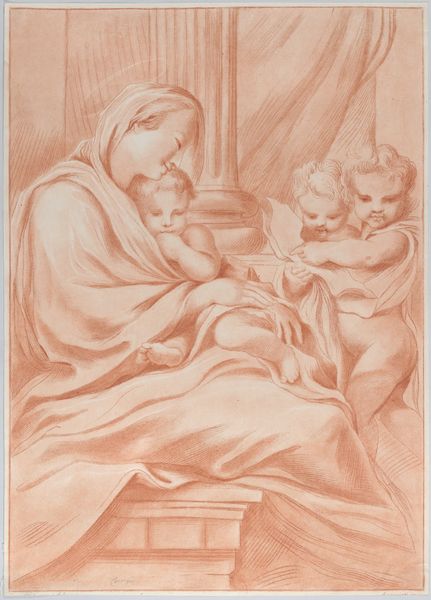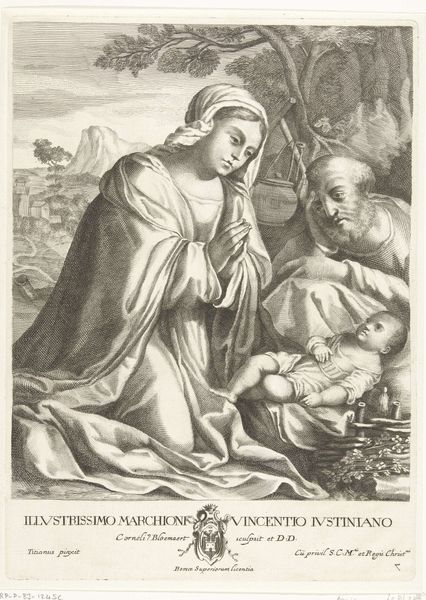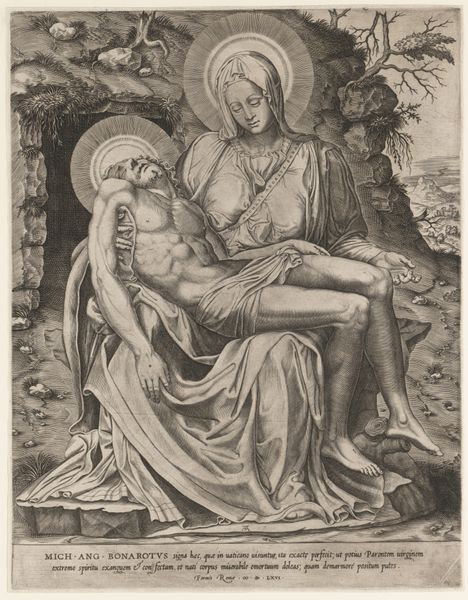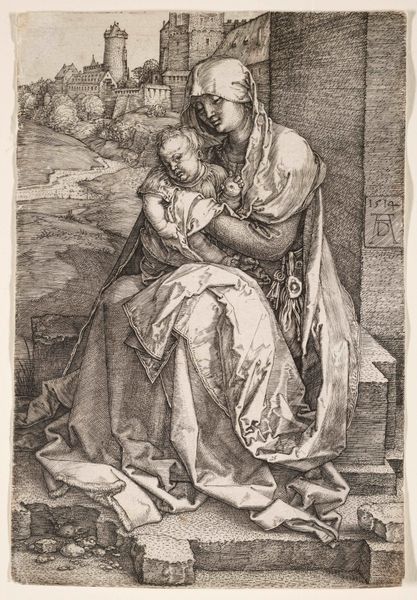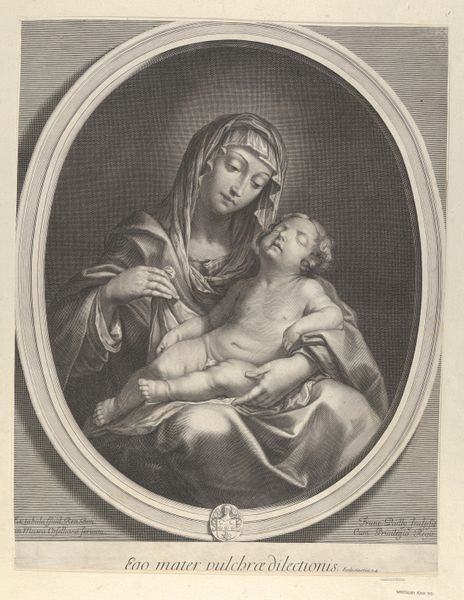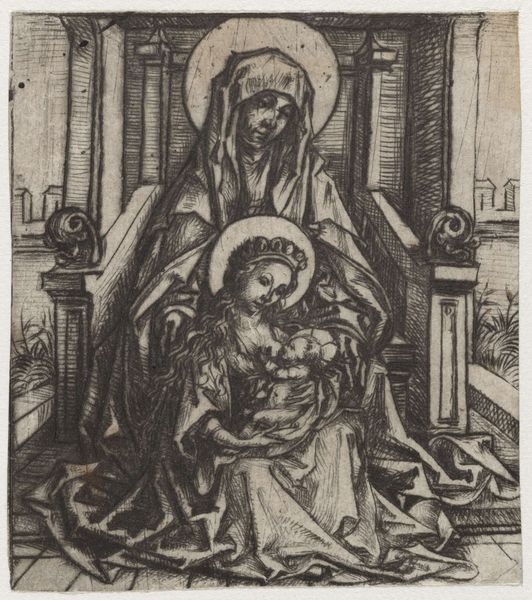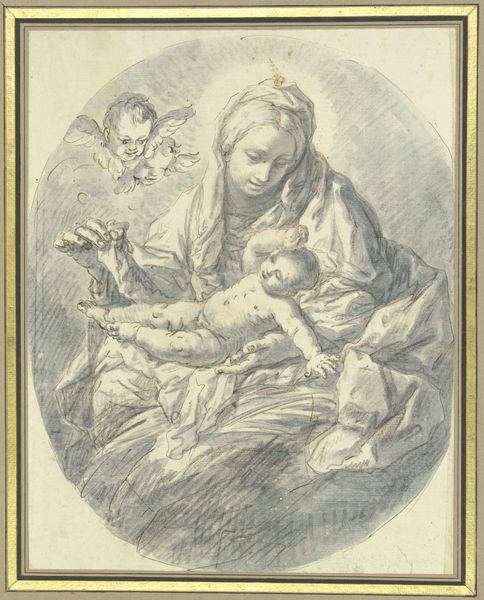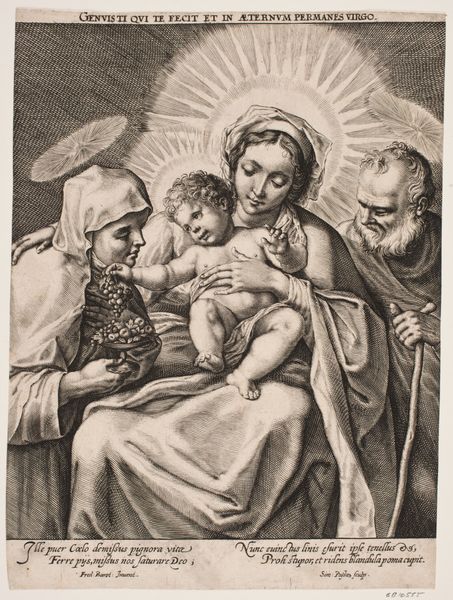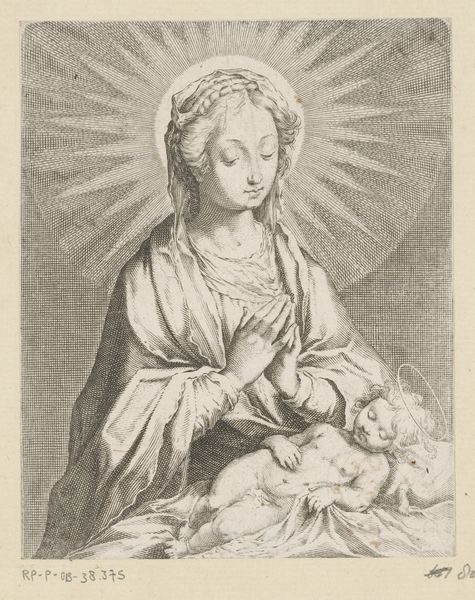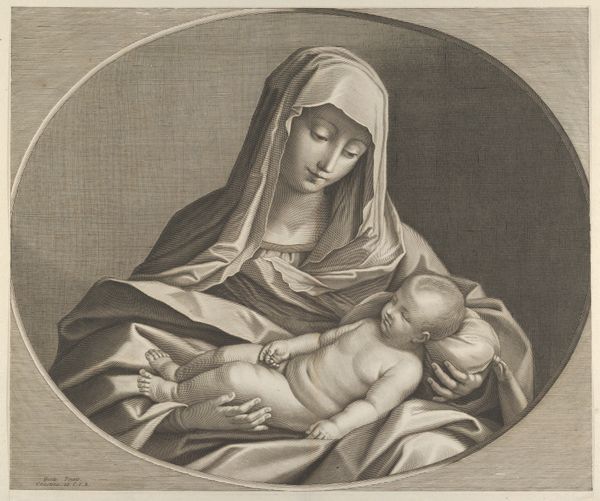
drawing, print, paper, ink, chalk, charcoal
#
portrait
#
drawing
#
narrative-art
# print
#
charcoal drawing
#
figuration
#
paper
#
11_renaissance
#
ink
#
underpainting
#
chalk
#
charcoal
#
northern-renaissance
#
italy
#
portrait art
Dimensions: 441 × 334 mm
Copyright: Public Domain
Editor: This is Garofalo’s “Madonna and Child,” a drawing made with ink, charcoal, chalk and charcoal on paper. I am struck by the vulnerability it conveys. The Virgin seems weighed down by sorrow and devotion as she gazes at her sleeping child. What do you see in this piece? Curator: This piece really resonates when considering the sociopolitical context of Renaissance Italy. While seemingly a tender portrait, the image touches upon broader issues of female agency, particularly in relation to motherhood and religious expectations. Mary’s submissive posture, coupled with the architectural motifs, underscores her role as an intercessor. How might this portrayal either reinforce or subvert established power structures? Editor: That’s fascinating. I hadn't considered the architecture. I was mainly drawn to the emotion. So you’re saying her positioning and that column sort of allude to societal expectations? Curator: Exactly. The column might symbolize the Church, while the crumbled brick suggests the ruins of the Old Testament, which makes you wonder: is Mary burdened or empowered by this transition and expectation? Thinking about it through a feminist lens, how much of her supposed "choice" was dictated by patriarchal forces? And how might that inform our understanding of similar depictions throughout art history? Editor: I suppose the gaze is a potent tool of communicating both power and oppression. Thank you for bringing attention to that context. It gives me much more to consider about how to interpret this. Curator: Indeed! It invites critical inquiry and reflection on representation, gender, and power dynamics, prompting dialogue that connects the artwork to broader contemporary concerns.
Comments
No comments
Be the first to comment and join the conversation on the ultimate creative platform.
